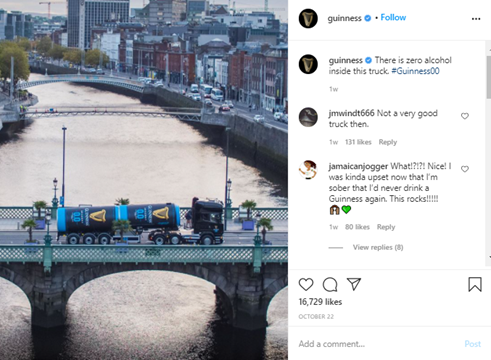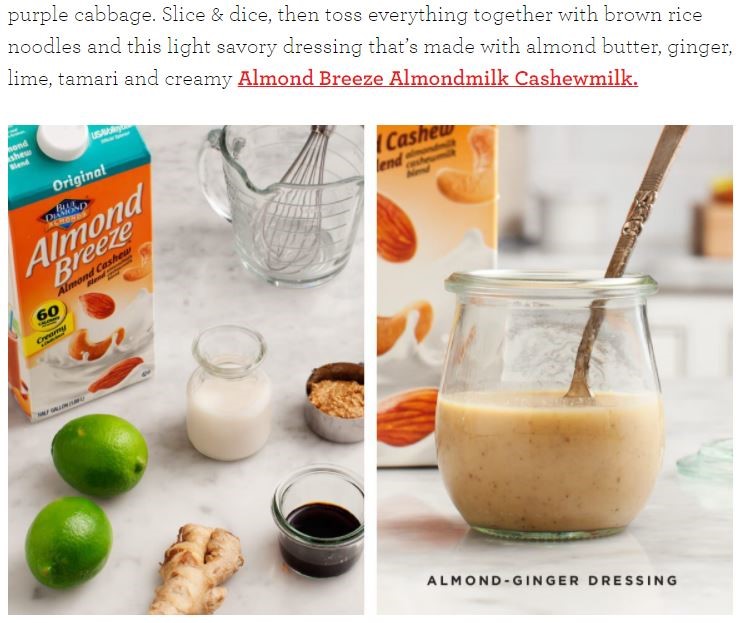It’s been a mixed bag for businesses in 2020, with some enjoying unprecedented sales and others sinking into despair. While Primark dropped 650 million sales per month to 0 in April, Domino’s Pizza announced the creation of 6,000 new jobs. In fact, the food and beverage sector has enjoyed a massive uplift during the pandemic. But what are retailers doing to stand out from the crowd? Join us as we delve into the competitive world of marketing for the food and beverage sector.
Marketing for the Food and Beverage Sector – The Stats
- 11 million people use food delivery orders in the UK in 2020, in the USA 70% of citizens order takeout.
- Tesco saw their online sales double, food delivery giant Just Eat Takeaway saw revenue rise 44% during the first half of the year as consumers ordered food online and Brits spent an extra £524 million on groceries in April compared to the same period last year.
- Even demand for fruits known for their high vitamin C content are up 60% year-over-year.
- 90% of customers research a restaurant before dining, meaning your online presence and reviews must be on par.
- Food delivery apps are rapidly growing in popularity. By 2021, over 20% of US smartphone users will use a food delivery app.
- 20% of all Pinterest pins are food related. Food and beverage is the most popular category of content on Pinterest.
- The estimated return on investment (ROI) for email marketing for restaurants ranges from $38 per dollar spent to $43 per dollar spent.
- Millennials want to know more about how their food is produced and “see the story behind the scenes” (81% and 80% respectively)
- 33% of restaurants use Instagram as their social media platform of choice
Top Food Hashtags
Using the right food hashtags can hugely help your post to get more traction, especially on Instagram. Here are the top trending ones to use.
- #beverage
- #food
- #drink
- #drinks
- #coffee
- #cocktails
- #foodie
- #beverages
- #foodporn
- #instafood
- #drinkstagram
Adapting to the current climate
Like it or not, 2020 is more than a little crazy and so adapting your business model to suit the current climate is an absolute must. This is something Belgium-based dine-in/takeaway retailer Foodmaker did seamlessly. In a bid to keep their fresh, healthy and tasty food business going, the brand pivoted from restaurants (which closed during the pandemic) to meal box delivery. And they did it in a clever way. Firstly, they offered Vedge Bags designed to make healthy eating a breeze. These were quick and easy to order online.

But what’s also awesome is that they totally read the room. According to a recent report, 1 in 4 Belgians have gained weight since the start of the Corona crisis. So, what better way to attract a slightly tubbier audience than with a ‘Back on Track’ ready-made meal plan?

Not only is this innovative, but it’s also highly creative and relevant. And it doesn’t stop there. Foodmaker has created a whole content campaign around the Back on Track concept, offering YouTube video content with a personal trainer. If that’s not making your content squat, drop, stretch and work as hard as possible, we don’t know what is. The videos can be viewed on their website and on YouTube via a playlist.

Marketing top tip
Shout about your USPs. What makes your product necessary? And how do you differ from competitors? Spell this out to consumers clearly.

Waitrose & Partners have also been creative with their content and products offering kits that can be enjoyed at home as well as online masterclasses. Combining physical products with a digital campaign is a great way to stand out from the crowd and maintain interest.

Responding to trends
When it comes to marketing, it’s important to stay on top of the latest trends in order to adapt your strategies and products accordingly. Low and no-alcohol sales soared 30% during lockdown, for example. Steep grown in the ‘nolo’ drinks category was previously driven by sales in pubs, bars and clubs. But covid-related restrictions and curfews increased consumers’ thirst for hangover-free options from the supermarket and corner shop, as drinking habits have become home-based.
Even with the end of ‘sober October,’ this trend is likely to continue into the festive season, driven by the younger generation, with almost half of 18-34-year-olds planning to serve low and no-alcohol drinks with the Christmas turkey according to research by Tesco.
It’s therefore no surprise that big brands have jumped on this trend. Guinness 0.0 will go on sale in off-licences, Waitrose and Morrisons supermarkets from November, before being rolled out to other retailers. After its release across the British Isles, Guinness 0.0 will launch in other parts of the world in 2021. Such products are being heavily promoted across social media via sites popular with the target millennial age group such as Instagram.

Marketing top tip 1
Use branded hashtags to make your content easy to find on social media and to help followers engage with specific conversations related to your product. Also, choose platforms that are best suited to your demographic. B2B promotions work well on LinkedIn whereas Gen Z love TikTok.
Marketing top tip 2
Use social media to your advantage. Platforms like Twitter provide the perfect chance to engage with your consumers and are a great place to promote products and services. As well as responding to questions and being helpful, you can also use social listening tools to learn more about consumer interests, personalities, challenges and more.

Fun Fact
40% of consumers expect brands to respond within the first hour of reaching out on social media, while 79% expect a response in the first 24 hours. So, being as interactive and socially aware as possible can improve consumer loyalty and trust.
Organic trends
Sales of organic food and drink rose sharply during the UK lockdown and have soared by double the rate of non-organic equivalents over the past year. Organic bananas, chicken, eggs and wine are among the standout winners that, from January, helped supermarkets enjoy the highest sales growth in the sector since December 2016.
Data from the market research company Nielsen shows organic food and drink sales grew by 6.1%. That’s almost double the 3.2% growth of non-organic food and drink products, in the year ending May 2020. It also reported a 18.7% increase in organic sales in the 12 weeks to the end of May. This includes 10 weeks of lockdown, compared with a 14.2% increase in non-organic equivalents. The sector is on track to hit the £2.6 billion mark by the end of the year, exceeding the £2.5 billion originally projected.
So, where does marketing come into play? Well with organic products being among the latest trends it’s a good idea to incorporate this into your marketing strategy. Yeo Valley, well-known for their organic yoghurt, did this well by dropping an #OrganicSeptember-related competition, a campaign that was perfectly relevant to their brand. By encouraging people to follow their Twitter page, retweet the post and tag a friend, their goal was to boost brand awareness and followers.

Marketing top tip
Always set Key Performance Indicators (KPIs) for your marketing campaigns as this will give you a clear focus and help you to see if your marketing efforts had the desired results. An #OrganicSeptember KPI, for instance, could be to boost Twitter followers by 5,000 (depending on the size of your brand) via a social media competition. This can then be easily monitored, and results recorded.
Embracing Corporate Responsibility
A new survey by Japanese beauty retail company iStyle Inc found that the pandemic has influenced more than half of its customers to buy from brands that advocate social causes. 50.8% of consumers now note a brand’s social responsibilities before making a purchase. So it can quite literally pay to be socially aware.
And there’s no shortage of campaigns to get involved with throughout 2020. Manchester United Star Marcus Rashford championed the #ENDCHILDFOODPOVERTY campaign, encouraging the government to support children receiving free school meals during the school holidays. While this was rejected by the government, many companies including food giants like Tesco have pulled together to help families in need. This has been promoted across the Tesco News site, shared by Marcus himself and then retweeted by the official Tesco Twitter account for maximum exposure.

Marketing top tip 1
In order to communicate your corporate responsibility strategy on a large scale, it’s a good idea to create short, sharp videos with easy to read captions. This storytelling approach makes your aims and goals easy to understand. Content such as this is also accessible and easy to share on social platforms.
Marketing top tip 2
Think about the ethos of your brand and come up with a campaign to match. Tesco’s well-known slogan is ‘Every Little Helps’ fits perfectly with their offer of £1 weekly Healthy Start Vouchers.
Working with influencers
Working with influencers is also another way to market your food brand. Sure, you might not be able to have Paddy McGuinness walking through a packed Christmas market, but you can carefully select relevant influencers that are a good fit for your company.
When Korean-based company Blue Diamond Almonds wanted to promote their new Almond Breeze non-dairy products they worked with Jeanine Donofrio, who runs the blog Love and Lemons. She used Almond Breeze to create a unique almond-ginger dressing for noodle bowls with the blog receiving hundreds of comments.

Marketing top tip
Focus on authenticity over garish sales messages. By showcasing the relevancy of your products in real-life settings, you can help people see what your food and drinks items are necessary.
Did you enjoy reading Marketing for the Food & Beverage Sector? If you did then send us some cake. Or you could hit share. Contact Contentworks today to help promote your brand. We offer articles, PR material, e-books, website content, social media strategy and more.

